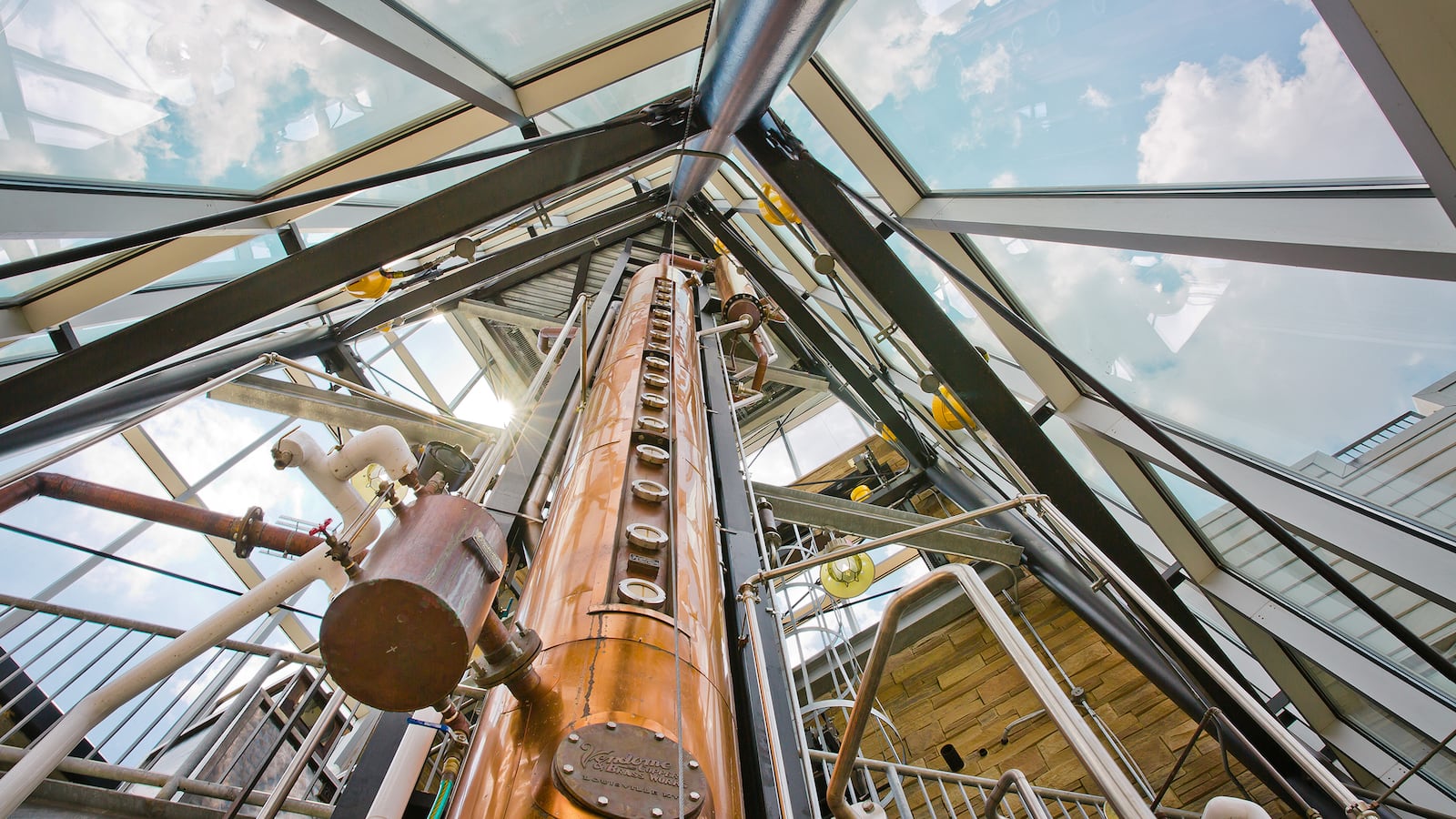I like Max Watman. I like his writing. I like the way he thinks, and the all-too-few times we’ve shared space, well, I just plain like the dude.
But damn it, Max, why’d you have to run down column stills in your story, The Reason Why Your Whiskey Should Come From a Pot Still? It wasn’t bad enough to call them “industrial” (which, hell, they are), but you had to add this damning quotation from John Powers.
<p>“Testifying before a turn-of-the-century government panel tasked with codifying what whiskey was—and specifically whether spirits made in a column still could be called whiskey—John Talbot Power, of Powers Whiskey, was asked if the products of a column-still had ‘any of the characteristics of whiskey.’ He said ‘none whatever.’ Further, he noted that the spirits obtained from a column ‘would not be accepted by any Irishman as whiskey.’”</p>
And that makes it sound like bourbon, made on a column still, isn’t “really” whiskey. I know you’ve been to Kentucky, Max, but for the benefit of the readers, let’s get this cleared up right now. We’re not talking about the same kind of column still here.
The column still Power is talking about, the column still any Scottish or Irish distiller is talking about, is what’s known as a Coffey still, named for Aeneas Coffey, who perfected it in 1831. It actually has two columns, called the analyzer and the rectifier, and it is, as Max describes, extremely efficient at separating alcohol from filtered wash, the distiller’s beer. It comes off the still up around 190-proof, 95-percent pure alcohol, and no, there’s not a lot of room left for flavor there.

But the column still that makes Kentucky bourbon is a single column apparatus that they call a “beer still.” Chris Morris knows how this works. He’s the master distiller for Woodford Reserve and one of the few distillers who regularly makes bourbon on both pot stills and Kentucky-style beer stills.
“If you’re in Scotland, Ireland, or Canada,” he explains, “and you’re making grain whisky for a blend, you want it to be neutral as possible. Regulations allow you to still up in that 189.5-proof range. But you’re not going to do that on a column still like we use in America. You’re not allowed to still bourbon higher than 160.” That’s a federal regulation and we don’t make whiskey with two-column stills, here. Most distillers finish at 135-proof or lower.
But it’s more about the singular nature of bourbon. “It’s not a blend, it’s your spirit,” Morris says. “The intent of the two types of distillation are very different. The Scotch/Irish [grain whiskey] type is trying to remove as much character as possible. Our column still is making the final whiskey. Two completely different goals, two different objectives.”
That’s how it’s done in Kentucky, and despite the proliferation of small distillers making bourbon on pot stills across the country, Kentucky is still the home of bourbon, and where the vast majority of it is made, on big, loud, ugly column stills: rusty, wrapped in insulation, and usually buried deep in the heart of the distillery, far from the guided tours.

But it was a taste of the product of one of those small distillers that finally pushed me to write this article, a taste that impressed the hell out of me: big and bold and rich, like bourbon oughta taste. It’s the recently released New Riff Bottled-in-Bond Bourbon, made in Covington, Kentucky, on a single column beer still. New Riff didn’t hide the still away; it’s in the glass-walled face of their building, jutting out from the side like the prow of an Ohio riverboat, shining with copper cladding.
“We wanted to showcase the column still,” says Jay Erisman, New Riff’s vice-president of strategic development. “We think it deserves to be highlighted. It’s every bit as deserving of being drooled over as the extra-tall copper stills at Glenmorangie.”
Erisman, like anyone at a small distillery, wears a lot of hats. He’s been around whiskey for years, (I even edited some articles on spirits he wrote a few years back when I worked at Whisky Advocate), and he even runs the pot still at New Riff when they make their gin and apple brandy.
“So yes,” he notes, “I’m the guy who runs the pot still, and yet ironically I’m also the guy who takes umbrage at the idea that pot stills are good and column stills are bad. We can’t sit around and praise our nation’s native whiskey, and then take column stills out back and shoot ‘em in the head.”
For Erisman, a lot of the value in the column still is in sour mash. That’s another basic difference between double and single column stills. The Scotch/Irish type is fed with filtered beer, called wash. The Kentucky type is fed with the whole beer, unfiltered, grains still in there. As it drops downward in the still, pausing every fifteen inches or so at another perforated plate, live steam passes up through it, stripping out the alcohol and flavor compounds. What reaches the bottom is known as “stillage,” and it’s added back into newly mashed beer in the fermenters.

“You don’t get stillage for sour mash out of a pot still,” Erisman explains. “What goes in the pot still is a liquid. What goes in a Kentucky beer still is everything, all the grains, everything. And those grains get pounded by live steam. They enter in about three-quarters of the way up the still, and all the way down, it’s giving up flavor. The beer still allows for that, and that’s important for making the biggest, fattest whiskey possible. You can make good bourbon on a pot still, but it is difficult to make it as big and as hefty as on a Kentucky beer still.”
“Why does that beer still make a difference?” he asks. “Because a pot still whiskey is lighter, going in the barrel, and you need the biggest, fattest whiskey you can get going in that new, charred oak barrel. That’s why a pot-stilled whiskey shows best in a used barrel. The beer still is essential in making big bourbon whiskey that ‘fits’ that new charred oak barrel.” (I have a feeling that Max doesn’t agree with this argument and is already working on his rebuttal.)
That’s why when Morris makes bourbon on the pot stills at Woodford, the first still gets loaded with distiller’s beer, grains and all. Why pot stills, in Kentucky? “When the decision was made to create a new brand with its own distillery, and the distillery would be reconstructed, a historic facility, the choice was made to acquire Labrot & Graham. Built in 1812, it pre-dates the Coffey still. It’s authentic to the building itself.”
Is a pot still more “hand-made,” somehow demanding more attention and care? They can be. But there are highly automated pot stills in Scotland; there are hand-run beer stills, like the big column at George Dickel in Tennessee, which is about the most determinedly manually-operated still I’ve ever seen.
Which leads to this: it’s a non-argument. “If distillation of whiskey is all about capturing and maturing the distilled flavors of a grain, then shouldn’t we just judge the end result?” asks Erisman. “Why does it matter which way you make it, if the end result is flavorful?”
Or as Chris Morris put it: “It’s not that one is better than the other. It’s just different.”
No fight, Max. First round is on me.






